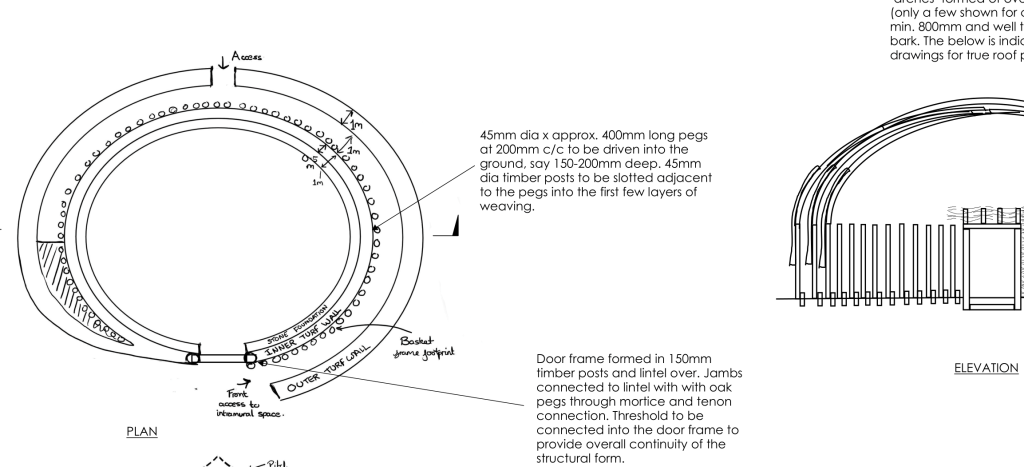Canny Coppicing
A branch slowly sprouts, growing strong and flexible, the first of many more to come…
A major component of the Iron Age Roundhouse being built at Dalerb is a woven basket frame structure for the roof, made from hundreds of hazel rods. With our ambition to source the materials from as local we had to consider how we would not only source the rods for the initial build, but also where we get a continual supply for ongoing maintenance.
The solution was in the form of a woodland management technique that dates back to the Stone Age called coppicing. Coppicing is a process starts by the felling of a tree to create a stool from which new shoots will grow. As these shoots grow, they create long straight poles which are brilliant for building and fencing. A coppice is then divided up into smaller sections, called cants, which are harvested in rotation, where only one cants trees are felled, leaving the rest of the coppice intact. This system allows for a cycle to develop as, with Hazel for example, it normally takes 8 years before the first trees are harvested for their timber. Those in the next cant will be harvested the next year until the cycle completes and it comes back around to the first cant.


Currently we are working with local landowners helping them to manage local woodlands. As part of this we are able to create a supply of wood that will be used as crafting material. Managing the woodland in this way is also beneficial for the longevity of the wood, promoting growth. Our future ambition is to create a coppice site on Drummond Hill that will supply the Centre with enough wood to be able to maintain not only the roundhouse, but the whole of the Iron Age Village. The benefits don’t end there as there, as the rotation of the coppice allows for many species of wildlife to thrive, with a variety of habitats being created from the coppice cycle.



